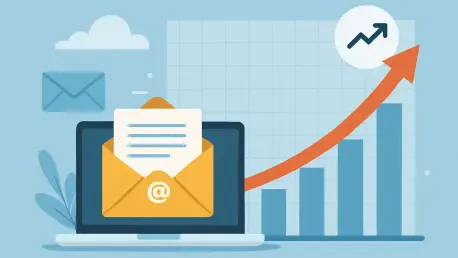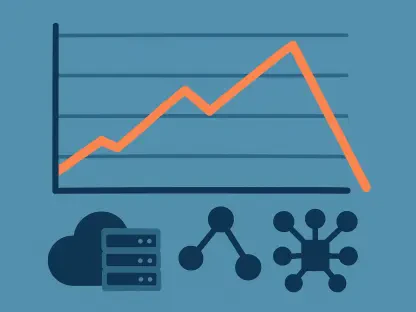In the ever-evolving realm of digital marketing, email marketing software has emerged as an indispensable asset for businesses striving to forge meaningful connections with their audiences and drive substantial revenue growth. With projections from Hostinger data indicating that global spending on these tools will surpass an impressive $14 billion by 2027, the industry stands on the brink of extraordinary expansion over the coming years. This remarkable growth trajectory underscores the enduring power of email as a communication channel, even amidst the rise of newer platforms. From small startups crafting their first campaigns to sprawling enterprises managing complex, data-driven strategies, the right software can transform outreach efforts into measurable success. This article delves into the diverse array of email marketing tools available, explores their specialized applications across various business needs, and highlights the innovative trends poised to shape their evolution through 2027, offering a comprehensive look at how technology and strategy intersect in this dynamic field.
Diverse Landscape of Email Marketing Tools
The spectrum of email marketing software available today is strikingly broad, designed to meet the unique demands of businesses at every scale. Categories include newsletter platforms like Mailchimp, which excel in straightforward content creation and distribution for smaller operations or periodic updates. In contrast, automation systems such as ActiveCampaign focus on intricate drip campaigns and triggered responses to nurture leads over time. Enterprise-grade solutions, exemplified by Oracle’s Responsys, cater to large organizations with needs for high-volume campaigns and stringent compliance features. Transactional email services like SendGrid ensure critical communications, such as order confirmations, reach customers reliably, while hybrid platforms like HubSpot integrate email with broader marketing functions. Matching the software to specific business objectives is paramount, as each type offers distinct strengths that can either streamline simple tasks or support sophisticated, multi-layered strategies with precision.
Beyond the basic categorization, the choice of software often hinges on the operational context and long-term goals of a business. For instance, a small e-commerce store might prioritize affordability and ease of use in a newsletter tool to build customer loyalty through regular promotions. Meanwhile, a global corporation could require an enterprise solution with robust analytics and integration capabilities to manage vast datasets and ensure regulatory adherence across regions. The diversity in software types also reflects varying levels of technical expertise required, with some platforms offering intuitive drag-and-drop interfaces and others demanding deeper customization for maximum impact. This segmentation ensures that whether a company is sending a few hundred emails or millions, there’s a tailored solution to enhance efficiency. As the market grows toward that $14 billion milestone by 2027, understanding these distinctions becomes even more critical for staying competitive in a crowded digital space.
Technology as a Game-Changer in Email Marketing
Technological advancements are fundamentally altering the capabilities of email marketing software, with automation emerging as a pivotal force in driving efficiency and results. Platforms like ActiveCampaign enable businesses to set up automated sequences, such as drip campaigns that deliver targeted messages based on user behavior, significantly enhancing lead nurturing. According to benchmarks from Pipedrive, automated emails can yield up to 320% more revenue compared to non-automated efforts, a statistic particularly relevant for e-commerce sectors where timing and relevance are key to conversions. This shift toward automation not only saves time but also ensures that communications are personalized and delivered at optimal moments, maximizing engagement. As businesses increasingly adopt these tools, the ability to scale outreach without sacrificing quality becomes a defining advantage in crowded markets.
Equally transformative is the integration of artificial intelligence (AI) into email marketing strategies, promising to elevate personalization to unprecedented levels. AI-driven features, such as predictive analytics and automated subject line generators, are already demonstrating their value by tailoring content to individual preferences with remarkable accuracy. Data from Flow.ninja suggests that these tools can boost engagement rates by 15-20%, a compelling incentive for marketers aiming to stand out in overflowing inboxes. By analyzing vast amounts of user data, AI can predict the best times to send emails or suggest content likely to resonate, making interactions feel less like mass communication and more like one-on-one conversations. As these technologies continue to mature over the next few years, their role in refining email strategies will likely become even more pronounced, pushing the boundaries of what’s possible in customer engagement.
Navigating Privacy and Shifting Consumer Expectations
Consumer behavior and regulatory landscapes are reshaping email marketing software, placing a premium on privacy and trust. With stringent laws like GDPR and CAN-SPAM setting clear boundaries, marketers are pivoting toward ethical data practices, such as zero-party data collection through preference centers where users voluntarily share their interests. Projections from Litmus indicate that by 2025, 70% of marketers will prioritize consent-based personalization to align with these regulations while maintaining effectiveness. This trend reflects a broader recognition that respecting user privacy isn’t just a legal obligation but also a way to build lasting trust with audiences. Software developers are responding by embedding compliance features directly into platforms, ensuring businesses can navigate complex rules without compromising on outreach goals.
Beyond legal requirements, the shift in consumer expectations demands a more thoughtful approach to email content and frequency. Today’s audiences are more discerning, often quick to unsubscribe if messages feel irrelevant or intrusive, which challenges marketers to balance persistence with restraint. Industry discussions on platforms like X highlight the importance of systems that prioritize user consent while still delivering impactful campaigns, a balance that modern software must achieve to remain relevant. This dual focus on compliance and customer satisfaction is driving innovation in how data is collected and used, pushing for transparency in every interaction. As privacy concerns continue to dominate public discourse, email marketing tools that adapt to these sensitivities will likely gain a competitive edge, fostering deeper connections in an era where trust is a valuable currency.
Future-Focused Trends in Email Marketing
Looking toward the horizon, several emerging trends are set to redefine the email marketing landscape, with interactivity taking center stage as a powerful engagement tool. Interactive emails, incorporating features like polls, carousels, and shoppable elements, are transforming static messages into dynamic experiences that invite user participation. Data from Ionos reveals that such innovations could boost click-through rates by as much as 300%, particularly in retail sectors where direct action can translate to immediate sales. This shift signals a departure from traditional one-way communication, encouraging brands to create emails that feel more like mini-websites, rich with opportunities for interaction. As consumer appetites for immersive content grow, software capable of supporting these features will become a cornerstone of effective marketing strategies.
Another significant trend is the push toward multichannel integration, reflecting the diversification of consumer touchpoints in today’s digital ecosystem. Platforms like HubSpot are leading the way by combining email with SMS, social media, and SEO tools, creating cohesive marketing funnels that track user journeys across multiple channels. This holistic approach ensures consistency in messaging while capturing data from various interactions to refine future campaigns. Additionally, AI remains a dominant force, enhancing everything from B2B outbound strategies to inbox response times, as noted by industry experts on X. The move toward hyper-personalized content, enabled by predictive analytics, promises to make every email feel uniquely relevant. These trends collectively point to a future where email marketing is not a standalone tactic but a deeply integrated component of broader digital strategies.
Strategic Choices for Business Success
For businesses venturing into or expanding their use of email marketing software, practical considerations play a crucial role in ensuring a strong return on investment. Cost is often the first factor, with pricing models ranging from affordable $10 monthly plans for small subscriber lists to thousands of dollars for enterprise-level features packed with advanced analytics and support. According to Favoured, the market is expected to grow at a compound annual rate of 11.7% through 2030, driven by innovations like mobile optimization that cater to on-the-go consumers. This wide spectrum of pricing ensures accessibility for startups while offering scalability for larger entities, but it also demands careful budgeting to avoid overpaying for unused capabilities. Selecting a tool that matches current needs while allowing room for growth is essential for long-term efficiency in a rapidly expanding market.
Integration and deliverability are equally vital when choosing the right software, as they directly impact campaign effectiveness and data management. Compatibility with existing CRM systems prevents the creation of data silos, ensuring seamless information flow across platforms for a unified view of customer interactions. Strong deliverability features, as emphasized by tools like Smartlead.ai and insights shared on X, are critical to guaranteeing emails reach inboxes rather than spam folders, especially for high-volume campaigns. Businesses must also consider technical support and ease of use, as these elements can significantly affect adoption rates among teams with varying levels of expertise. As the industry races toward that $14 billion benchmark by 2027, making informed decisions about software selection will separate those who merely participate in email marketing from those who truly excel at leveraging its potential for growth.
Reflecting on Email Marketing’s Path Forward
Looking back, the journey of email marketing software reveals a dynamic evolution, shaped by technological breakthroughs and a deepening understanding of consumer needs. Automation and AI have begun to redefine engagement, turning routine communications into personalized exchanges that drive remarkable revenue gains. Privacy concerns have prompted a shift toward consent-driven strategies, ensuring compliance with global regulations while fostering trust. Interactive content and multichannel integration have started to blur the lines between email and other digital experiences, enriching user interactions. With the market aiming for a $14 billion valuation by 2027, businesses face the ongoing task of aligning tools with strategic goals. Moving ahead, the focus should center on embracing mobile-first designs and voice-activated features, while continuously refining personalization through data insights. Staying agile amid these changes will be key to harnessing email marketing’s full potential in the years beyond.









